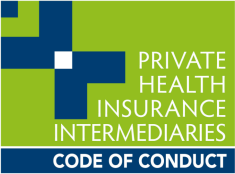Family health insurance costs can vary from one insurance provider to another and also depend on what sort of insurance coverage you have for the entire family. There are many different types of costs associated with insurance generally, and understanding what each of them means and entails is important for making an informed decision while buying a policy and, consequently, using it where needed. Here, we explain each type of associated cost:
Premiums
Premiums are the regular payments you make to keep your family health insurance policy active. Depending on your budget and provider, you can choose to pay your premiums fortnightly, monthly, quarterly, or yearly. The amount of your premium will depend on several factors, including the type of coverage you select, the services covered, and any additional features or benefits you opt for.
It’s essential to talk to your provider in detail about your premium structure and payment options. For instance, some providers offer discounts if you pay through direct debit from your bank account instead of a credit card. Additionally, paying annually instead of monthly may also result in a discount. It’s important to note that if you stop paying your premiums, your coverage will cease, leaving your family without insurance protection.
Excess and Co-payments
An excess is an out-of-pocket cost that you agree to pay when you’re admitted to the hospital. The general rule is that the higher your excess, the lower your premium will be. Families often opt for a higher excess to keep premiums more affordable. However, you will only be required to pay this excess when you or a family member is admitted to the hospital for treatment—not for claiming extras services like dental or physiotherapy.
Co-payments, though less common in 2024, are another type of out-of-pocket cost you may need to pay each time you’re admitted to the hospital or use certain services. It’s important to double-check your policy to see if co-payments apply.
When reviewing your policy, pay special attention to how the excess applies to your children. Some policies will waive the excess for children under a certain age, while others will require a payment. Additionally, some policies may waive the excess altogether if the hospital admission is due to an accident. Understanding these details upfront ensures that you’re not surprised by unexpected costs when a family member needs hospital care.
By understanding the costs associated with family health insurance, you can make smarter decisions that ensure your family is protected while balancing affordability. Always review the fine print in your policy to ensure you know exactly what you’re paying for, and take advantage of discounts and options that work best for your financial situation.
Lifetime Health Cover Loading
Lifetime health cover loading is the additional cost for those who take out hospital cover after the age of 31 years. This means that if you have not taken out any private hospital cover after turning 30, and later on you decide to buy one, you will have to pay a 2% LHC loading cost on top of your premium for every year you are aged over 30.
A simple example for you to understand this loading fee is that imagine if you take out private hospital coverage at the age of 35 years old you will then have to pay an extra 20% on the cost of this coverage per year for 10 years. Likewise, if you buy a policy when you are 50 years old, you will pay 40% more per year for 10 years. This is why it is recommended that before you turn 30, you should have private health insurance in place, which will save you a good amount of the loading fee in coming years.
Government Rebates
The Australian Government’s rebate can reduce premiums based on the policyholder’s age and income. In the case of family health insurance, the government rebates can apply and be even more beneficial if the household is dual-income. This page describes various situations of a policyholder and how they may receive their private health insurance rebates. Please check out the page, and if you have any questions, please feel free to email us your inquiries at enquiries@healthdeal.com.au.
All the above-mentioned costs related to health insurance for a family can be reduced and managed well according to your chosen policy and its coverage. It is, however, very important to balance your costs with benefits from your insurance provider and government rebates for family health insurance. This will help you manage your bills more efficiently and ensure value for money while keeping your loved ones protected.
Tailored Family Policies
Many health insurance providers offer specially tailored family health policies designed to meet the unique needs of families. For example, young families may prioritise coverage for maternity care and services like speech therapy or dental for children, whereas older families might focus on managing chronic conditions or higher-level hospital care. These family-specific policies often include additional benefits, such as no-gap arrangements with preferred providers, meaning you won’t be out of pocket for certain treatments like dental check-ups and glasses.
Health funds like Bupa, Australian Unity, hif, NIB, ahm, and Westfund provide a range of family cover options. Each fund offers unique features; for instance, some may cover children’s mouthguards under dental, while others may have higher limits for speech therapy or physio. These details matter when choosing a policy, as they allow you to customise your coverage based on your family’s individual health needs.
If you want to compare policies quickly and efficiently, tools like Compare Your Health comparison service are invaluable. By using this tool, you can compare policies from multiple providers and find the best coverage for your family’s needs without the hassle of contacting each insurer individually.



